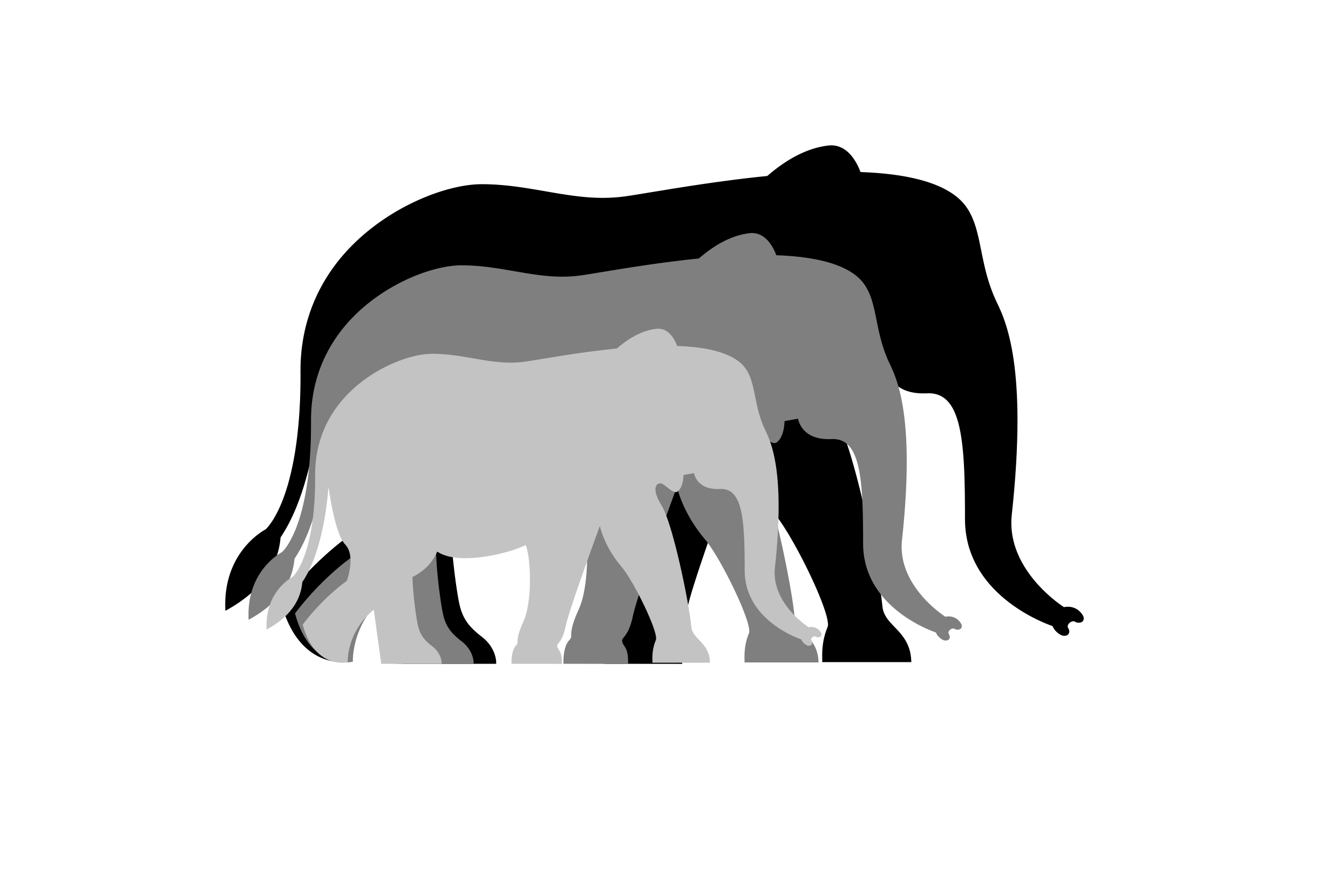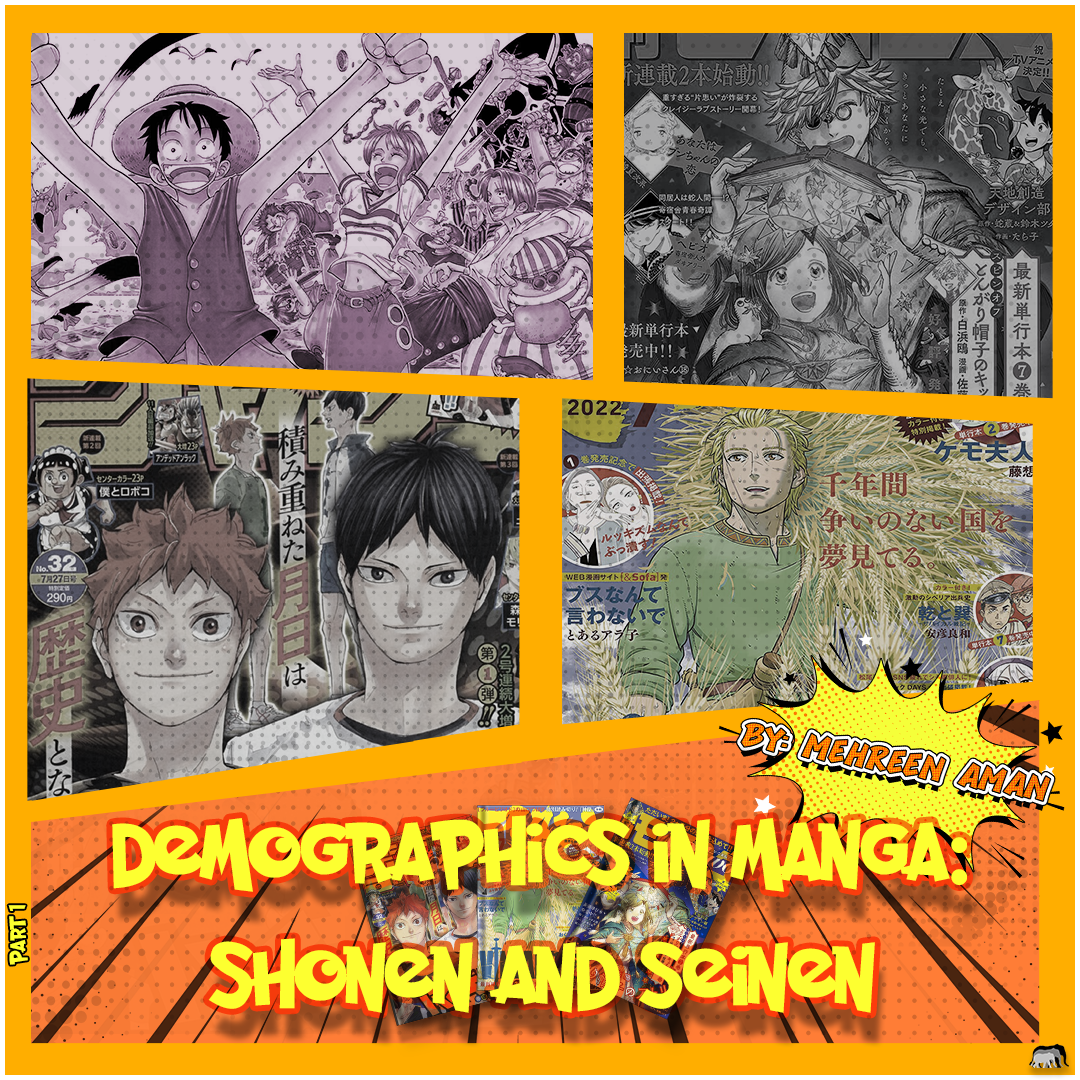Manga, in simple words, are comic books originating from Japan which borrow the qualities of both visual and narrative storytelling (including dialogues, any possible point-of-view narration and speech/thought-bubbles). They are mostly published in black-and-white print with a few exceptions and are read from right to left. Though nowadays manga has become somewhat of a mainstream form of entertainment (especially because of its booming popularity in the 21st century – imperative to note here: manga is not as popular as its animated counterpart anime), people still have some preconceived notions and misconceptions about this medium of storytelling.
(Note: ‘manhwa’ is a long-strip full colour comic originating in Korea, ‘manhua’ come from China, and ‘webtoon’ is an umbrella term and can be associated with comics made anywhere in the world as long as they are digitally released on the ‘Webtoon’ app – which itself originates from South Korea’s Naver Cooperation).
Manga has a long history in Japan, and hence throughout the years it has developed into an incredibly vast medium of storytelling which has dabbled in (quite literally) every single genre and combination of genres: fantasy, adventure, action, drama, romance, thriller, comedy, slice-of-life, psychological, philosophical, sci-fi and so on. It is stated in A History of Manga in the Context of Japanese Culture and Society by Kinko Ito: “Like any other form of visual art, literature, or entertainment, manga does not exist in a vacuum. It is immersed in a particular social environment that includes history, language, culture, politics, economy, family, religion, sex and gender, education, deviance and crime, and demography. Manga thus reflects the reality of Japanese society, along with the myths, beliefs, rituals, tradition, fantasies, and Japanese way of life. Manga also depicts other social phenomena, such as social order and hierarchy, sexism, racism, ageism, classism, and so on.”
Manga is read by everyone – from children to adults, and by both men and women. Due to this, manga are categorised in demographics based on the magazines they are published in. When talking specifically about manga, demographics refer to the target audiences. Importantly, demographics and genres are completely different things. The demographic of a manga is primarily decided by the magazine it is published in, but its genres depend on the type of story the author is writing. For example, people often think shoujo manga (a manga demographic aimed at young girls and women) is hyperfocused on romance and feminine elements – which, even if it is, does not invalidate its value and worth. However, shoujo is an incredibly diverse demographic of manga written by mostly female authors that can and does include all possible genres, from horror to mystery to drama to romance to action. Thus, thinking that all shoujo or media targeted towards women is bad (or “mid”) because you didn’t like the two series you tried is incomprehensible (the passive aggressiveness is intentional, but more on that later). To summarise: a manga centred around action does not mean that it is a shonen, and a manga centred around romance does not mean that it is a shoujo.
A manga is typically published chapter-by-chapter in its respective magazine (these chapters are later compiled into volumes) and each magazine has a specific group of people it targets. This depends on both the gender and age of the audience. For example, a highly popular manga magazine known as the Weekly Shonen Jump targets young male teens and publishes a magazine catalogue every week (excluding holiday weeks) which means that mangakas (manga authors) have strict deadlines and are expected to complete one chapter per week (the heavy workload on mangakas has been brought up and criticised often by fans, however the issue still prevails and has also endangered the lives of these authors due to extensive overworking). Manga magazines can be weekly, bi-weekly, bi-monthly, monthly or semi-monthly.
However, since I am writing this article based on a wholly personal desire to debunk the misconceptions and biases people have towards certain demographics of manga, I believe that demographics do not necessarily dictate what you will and will not enjoy. A male manga reader can love manga that is published in a magazine targeted towards girls, and a female manga reader can love manga that is published in a magazine targeted towards boys. As someone who loves all demographics and has read a fair amount (with a never-ending TBR list), there are a few more things I’d like to say before getting into the meat of this article: reading a variety of manga, from all demographics, will give you a much better insight into how truly incredible this medium of entertainment can be. Reading and enjoying a shoujo manga that includes ‘girly’ or ‘feminine’ elements such as romance does not emasculate a male reader, nor does it make them any less capable of liking the series with the same passion as a female reader would. Romance in the first place is a universal element and not necessarily something to be gendered, but since in history women and girls have found solace in this specific genre (everybody say thank you Jane Austen), it is often associated with femininity and perceived as a sign of weakness and fragility (which is hilariously wrong).
Now, onto the main part of this article (I got derailed for 700 words, yikes), I will be discussing the four main demographics of manga: shonen, shoujo, seinen and josei – including literal meanings of these terms, examples of influential and popular manga/mangakas, and how each demographic often differs from the other in its stereotypical/common method and techniques of storytelling (I will also include my criticisms – don’t come after me). Though again, because of a personal commitment, I will be focusing a tad bit more on shoujo and josei (i.e. the two demographics aimed at girls and women) because, as mentioned in the previous paragraph, when it comes to manga made for a predominantly female-audience, many will think of it as shallow and that it only focuses on romance and other ‘trivial’ elements of life. Hence, a main goal of this article is to thwart these prejudices and elaborate on why stories for women (by women) are not any less important or any less well-written than stories aimed at men or written by men.
Starting with the most mainstream and popular manga demographic, we have shonen. The word ‘shonen’ itself literally translates to ‘young boy’ and is a demographic that targets a mostly young male audience. A majority of anime and manga fans (like me) first discover these mediums via highly popular shonen anime such as Dragon Ball Z and Naruto. Most shonen manga become extremely popular after their anime adaptations take the world by storm: see how the volume sales of manga like Demon Slayer, Jujutsu Kaisen etc. skyrocketed after their highly successful anime adaptations. Typically, shonen stories tend to be action, adventure and plot focused, with tropes like tournament arcs and power of friendship being common. One major criticism I and many others have of shonen manga is (sensitive topic incoming woohoo) the ridiculous use of fanservice and rampant mistreatment of female characters (who are often underage as well). For those who may not know, ‘fanservice’ refers to scenes and cliches used in media that exist for the purpose of appealing to the audience (in this case, a male audience) and are sexual in nature. In more straightforward words, in shonen you will often see female characters being objectified for the sake of making them seem ‘desirable’. Cleavage and certain body parts will be hyper focused on by the camera/eye view and are often drawn in exaggerated ways to further entice the audience, also known as the ‘male-gaze’. Scenes full of accidental groping, peeking and comments on women’s bodies are unfortunately everyday occurrences in shonen manga (though there are obviously exceptions). This problem is evident even in some highly popular and respected shonen manga, and an issue that the industry itself is too comfortable capitalising on. However, a great example of a shonen manga with fantastic female characters that are treated as humans and not objects is Fullmetal Alchemist, whose mangaka is a woman. Some other examples would be Haikyuu!! and Hunter x Hunter (since these manga centre around a main male cast, the number of male characters far exceed the number of female characters, but the female characters that do exist are fairly well-written and given agency). When we discuss genres in shonen, it is imperative to note that just like any other demographic, it contains stories corresponding to all possible genres. Many shonen (especially ones that I love) focus on the themes of friendship, camaraderie and rivalry, and range from being goofy to discussing serious topics (*cough* One Piece does this best *cough*). Though most popular shonen are action-based (and come from Weekly Shonen Jump), there are some lesser known shonen that deserve a spotlight, since there are hidden gems within every demographic.
Next, we have seinen manga. The word ‘seinen’ itself literally translates to ‘youth’ and is a demographic that targets adult men from the ages of 18–40 and above. Typically, the most famous seinen manga are those that focus on serious narratives, involve violence/gore or are psychological/philosophical (e.g. Vagabond, Berserk, Vinland Saga, Tokyo Ghoul, Monster) and due to this this demographic is commonly perceived as the most “mature” or “serious” one. However, again, this is not necessarily 100% true, rather it is a result of some series being more mainstream than others. Seinen also consists of stories of almost all genres; a particularly diverse seinen magazine is Monthly Afternoon (Vinland Saga, Blue Period, Land of the Lustrous, Mushishi, Skip and Loafer, Historie). Some other seinen magazines include: Young Animal (Berserk, March Comes in Like a Lion), Young Magazine Weekly (Akira, xxxHoliC), Ultra Jump (JoJo’s Bizarre Adventure), Big Comic Original (Monster, Pluto), Young Jump (Tokyo Ghoul, Kaguya-sama: Love is War, Golden Kamuy), Morning Two (Witch Hat Atelier), Comic Beam (Emma), Big Gangan (The Apothecary Diaries), Big Comic Spirits (Goodnight Punpun, Insomniacs After School, Uzumaki, 20th Century Boys).
That’s all for the first part of the article! In the second and last part, I will be going into detail about shoujo and josei – two equally important demographics that hold much personal importance to me. I hope this article was informative and fun for you to read (and I hope you will read the next part with an equal amount of interest and enthusiasm)!
Resources and references:
- A History of Manga in the Context of Japanese Culture and Society by Kinko Ito
- What Is The Male Gaze? https://filmlifestyle.com/what-is-the-male-gaze/
By Mehreen Aman
Writer (Team 2023-2024)
Note: the views expressed in the article solely belong to the writer and do not reflect TLC.

